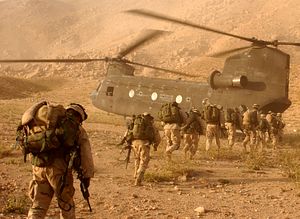After nearly a year-long delay, the United States and Afghanistan on Tuesday signed the long-awaited Bilateral Security Agreement (BSA) that will set the legal basis for a residual U.S. troop presence in Afghanistan following the scheduled withdrawal at the end of this year. A similar agreement known as the Status of Forces Agreement (SOFA) that will allow NATO troops to stay on in Afghanistan was signed as well. The BSA and SOFA were signed just a day after Afghanistan’s new president, Ashraf Ghani, was inaugurated. His predecessor, Hamid Karzai, was originally slated to sign the agreement late last year, giving the United States ample time to plan for the logistics of a concurrent troop withdrawal and setting up a post-2014 contingent. Under the agreement, 9,800 U.S. and approximately 2,000 NATO troops will remain in Afghanistan beyond December 31, 2014.
“This agreement represents an invitation from the Afghan government to strengthen the relationship we have built over the past 13 years and provides our military service members the necessary legal framework to carry out two critical missions after 2014: targeting the remnants of Al Qaeda and training, advising, and assisting Afghan National Security Forces,” Obama noted in a White House statement. “The signing of the BSA also reflects the implementation of the Strategic Partnership Agreement our two governments signed in May 2012,” he added.
Meanwhile, U.S. Defense Secretary Chuck Hagel described the agreements as an “important step forward.” The agreements “will enable American and coalition troops to continue to help strengthen Afghan forces, counter terrorist threats, and advance regional security,” Hagel added in a statement.
Gen. Martin E. Dempsey, Chairman of the U.S. Joint Chiefs of Staff, also praised the agreements. “After 12 years of investment and partnership, today’s decision by the Afghan government to approve the Bilateral Security Agreement is a welcome one,” Dempsey remarked in a statement, adding that the agreement validates “that we have a willing partner as we move forward and provides certainty of our continued presence there in 2015. It also paves the way for a continuing NATO presence.”
Ghani, upon signing the agreement, reiterated that he believed that a continued U.S. and NATO presence in Afghanistan beyond 2014 is in the best interest of Afghanistan. The nature of the operations that U.S. and NATO forces will be permitted to carry out post-2014 is constrained by the agreements. In general, foreign forces will primarily train their Afghan counterparts and carry out limited counter-terrorism operations.
At the start of 2014, there were about 38,000 U.S. troops in Afghanistan. While the BSA will initially see 9,800 troops stay on in Afghanistan beyond the general withdrawal, that number will nearly halve by the end of 2015, dropping to about 4,900. In addition to security cooperation via the BSA, the United States will continue to provide Afghanistan with development assistance in the $5 billion to $8 billion range annually.

































